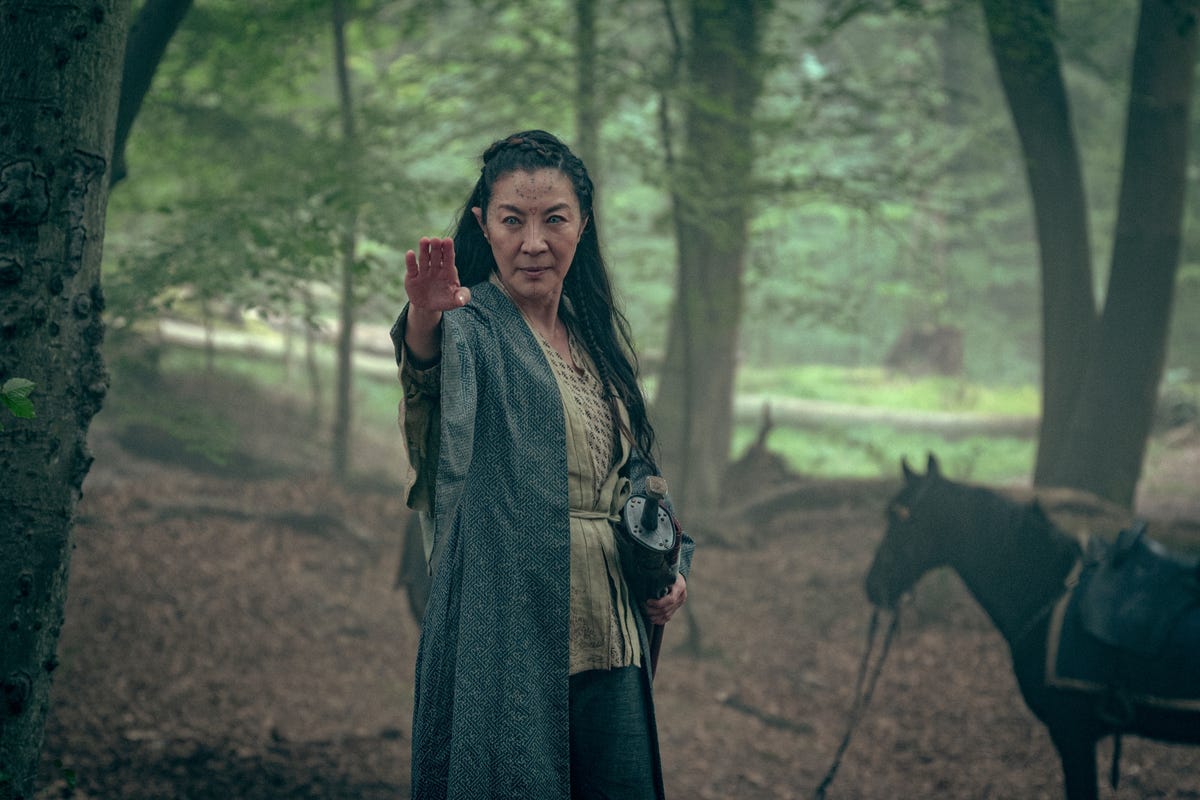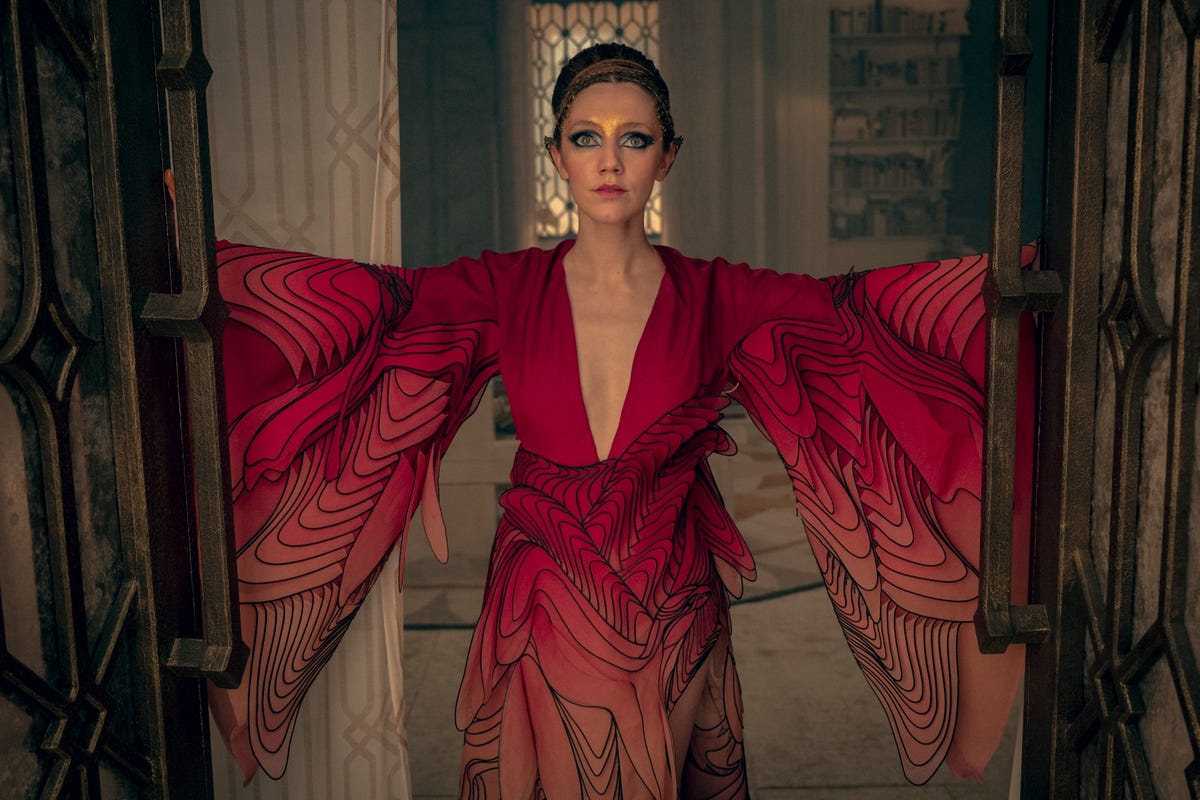[ad_1]
Geralt of Rivia is at the center of The Witcher universe, in its books, video games and Netflix series. The broody monster hunter is the Witcher. The mythology blends bloodlines, magic, gore and war with devious plots, requiring you to keep up with it all and stick with its hero. Mysteries and questions constantly float in the fog, and The Witcher: Blood Origin answers at least one of them: How did the first Witcher come to be?
The prequel series is the second spinoff in Netflix’s hit Witcher franchise, consisting of four episodes that stream on Dec. 25. The show was originally supposed to be six episodes, and in terms of character development, the shorter length does not really work in its favor.
As promised, viewers will meet the heroes who laid the foundation for the monster killers we know, along with the backstories for other plot points in the original series. There’s an overarching prophecy and a motley crew of seven chosen ones who must band together with a common goal. They’re all wayward souls — stop me if you’ve heard this one — who either want vengeance or redemption.
At times, Blood Origin feels like Game of Thrones or Rings of Power or Willow or Wheel of Time (you get it), but one thing this show does well is connect the dots. I found myself saying, “Hey, that’s ___!” a few times. If you’re brand-new to the franchise, there’s plenty of action to reel you in, but all the stylish sword fights in the world won’t help you understand how everything ties together.
Fans of The Witcher know that every time Geralt’s yellow eyes turn black, he’s going into beast-slaying mode. Fast-moving, bloody and action-packed, this series is not only a peek at the earliest version of his kind, but a history dive into Xin’trea (later Cintra) and Ithlinne’s prophecy. We don’t explore Kaer Morhen’s famous School of the Wolf, as the focus here is on the elves and their domination in politics, magic and society on the Continent. Elf beef rules this show, and you’ll find that many of them are a-holes.
Set over a thousand years before Geralt’s time, the story centers on the “Conjunction of the Spheres.” Showrunner Declan de Barra purposely plucked this vague moment from Andrzej Sapkowski’s books and created the entire show around it. At Netflix’s fan event Tudum, he said that while working on season 2 of The Witcher, “we had a story point we couldn’t fix because we needed to know what happened.” So the prequel takes us to a time when elves were colonizers with a well-defined caste system of monarchs, rich nobles, merchants, warriors and lowborns. Some want peace and others thrive on conflict. Resentful dwarves? Yes. Scheming wizards? Yes. Humans? No. Brutal fights that splatter blood on the camera lens? Yes indeedy.
A familiar face greets us in the opening scene of the first episode, which serves as a big wink to let you know this prequel ties in with the original series. Sorry, it isn’t Geralt — or even Vesemir — but everyone’s favorite obnoxious bard, Jaskier (Joey Batey). Right away, it’s clear that the theme of this Witcher installment is the power of story. Whether told through song, gossip or as campfire tales, stories are meant to inspire and change real-world outcomes. As narrator and a Seanchaí, Minnie Driver’s character drives that point home for Jaskier.

You’ll learn whether these elves qualify as jerks, but the cleavers are truly awesome weapons.
Netflix
Éile (Sophia Brown) is a badass Raven Clan fighter who was once loyal to the kingdom of Pryshia. Though she’s now a celebrity bard, she has plenty of enemies and a grudge toward Fjall (Laurence O’Fuarain), an exiled Xin’trea warrior who lost his job for hooking up with a princess. Together, Fjall and Éile decide to avenge those who wronged them.
On the run, they eventually link up with Michelle Yeoh’s Scían, a sword master and the last living member of the Ghost Tribe. Yeoh does not disappoint in her performance, whether it’s a busy action scene or the calm way she gets her point across. We learn a tiny bit about Scían and her people to get a snapshot of her agenda, but it would have been cool to see how her clan figured into the prophecy that drives this whole series.

Michelle Yeoh fans will love seeing her in action as the mystical warrior Scían.
Netflix
Four other characters join Éile and Fjall on their quest, which morphs into a world-saving mission with a side of vengeance. There are the celestial twins Syndril and Zacare who have magical powers, and Brother Death, a skilled hunter with a wicked penchant for cleavers. Meldof, a dwarf who at first comes off as a potential psychopath, wields a mighty hammer named Gwen. And she sure knows a lot about monoliths — another big wink.
Who are they going up against? An unexpected coup throws things into chaos, leaving the gang to take on The Empire. More than one baddie exists here. An arrogant super mage named Balor (Lenny Henry, who was also in Rings of Power) decodes monolith magic and unknowingly sets the stage for a cosmic event. His palace runnings with Eredin — whom many will recognize from The Wild Hunt in the video games and main TV show — have Balor feeling himself. But with great power comes great sacrifice and lots of backstabbing.
Brutal fight scenes command your attention, and deaths are in true Witcher style: graphic. Many of the costumes are beautiful, but if you’re expecting traditional medieval garb, remember this is an advanced elf civilization in a period before monsters and human interaction.

This is a costume worthy of a certain type of elf in Xin’trea’s caste system.
Netflix
Over the course of the show, we see the magnificent seven become friends — or lovers. Some of it tracks. Zacare is in a romantic relationship with Brother Death, one that was established before this prequel. Meldof is tough yet heartbroken. There is supposed to be a love story between our star heroes, Fjall and Éile. However, it doesn’t feel like there’s been enough time to let their chemistry percolate into a genuine, epic love. They share a bond, but the romance needs to heat up a little longer to hit us in the heartstrings.
Though parts of the series feel very rushed, you’ll still appreciate the action and root for the group’s cause before it’s done. One reason for that is the show’s insistence on spotlighting Éile’s songs. She sings at the beginning but loses her willingness to be “the Lark” when things get dark. Part of her journey is seeing whether her voice can change the world.
The Witcher: Blood Origin delivers on giving us the Witcher prototype, and helps explain plot details in the first two seasons of the original show while bridging storylines for the upcoming season 3. Easter eggs and important connections are sprinkled throughout, flipping the script on what we know about bloodlines and the Continent’s elves and monsters. For these reasons, you’ll want to pay special attention to the series’ final episode — which is arguably its best.
2023’s Best TV and Streaming Shows You Can’t Miss on Netflix, HBO, Disney Plus and More
[ad_2]
